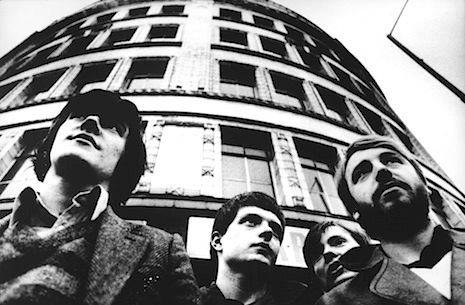
It hardly seems like thirty-five years since Joy Division’s lead singer Ian Curtis committed suicide and brought to an end one of the most promising bands since The Beatles. Though perhaps not unexpected, Curtis’ suicide came at a crucial moment for Joy Division on the eve of a major US tour. Guitarist Bernard Sumner later said that if Curtis had decided on killing himself, then there was nothing anyone could have done to prevent him from doing so. Indeed, Curtis often confided in his wife Deborah that he had no desire to live past his twenties. It was a romantic notion of the artist as tortured poet. Deborah thought Ian was just going through a phase that he would eventually grow out of. However, when she discovered some of Ian’s early teenage poems she understood that the singer was darkly troubled.
As TV presenter and record company supremo Tony Wilson once remarked, punk rock said “Fuck off,” Joy Division said, “We’re fucked.” The idea of being fucked came in part from Curtis’ own sense of alienation and the environment in which he, and his fellow bandmates Sumner, Peter Hook (bass) and Stephen Morris (drums) grew up—a dilapidated industrial wasteland being slowly bulldozed to make way for high rise buildings and shopping centers.

This was Britain in the seventies: a twice bankrupted country, deprived inner cities with no amenities, where buildings were collapsing, services defunct, unemployment and poverty rife. This is all too easy to list, but take one example of what conditions were like—this was a country where a vast number of homes did not have indoor toilets. The demand for change was not just inspired by a sense of political or social justice but by the arrival of American television programs—detective shows like Cannon, Columbo, Ironside, and kids shows like The Monkees and even The Banana Splits—which presented an alternate technicolor world where people had spacious apartments with central heating, air conditioning, hot and cold running water, matching curtains, scatter cushions and an affluent lifestyle. Joy Division’s hometown of Manchester—like Glasgow or Newcastle or Liverpool or Leeds or Birmingham—was Dickensian in comparison, and the lack of shared communal, creative experiences led many to focus inwards.
When punk arrived in the form of a Sex Pistols gig at the Lesser Free Trade Hall, Manchester in 1976, Curtis and co. saw a way out. Joy Division: The Documentary tells the story of Ian Curtis, Bernard Sumner, Peter Hook and Stephen Morris from their beginnings as a punk-inspired band Warsaw to recording their seminal and generation defining records Unknown Pleasures and Closer. It’s a story of how lasting success is created by the disparate involvement of managers, producers, designers, club owners, friends, but most importantly talent.